


Lake Onuma near the top of Mt Akagi freezes over every winter, and it’s full of wakasagi lake smelt. This makes it the perfect place to go ice fishing in a Japanese winter wonderland! I headed up to the lake myself last month to see what it was like.
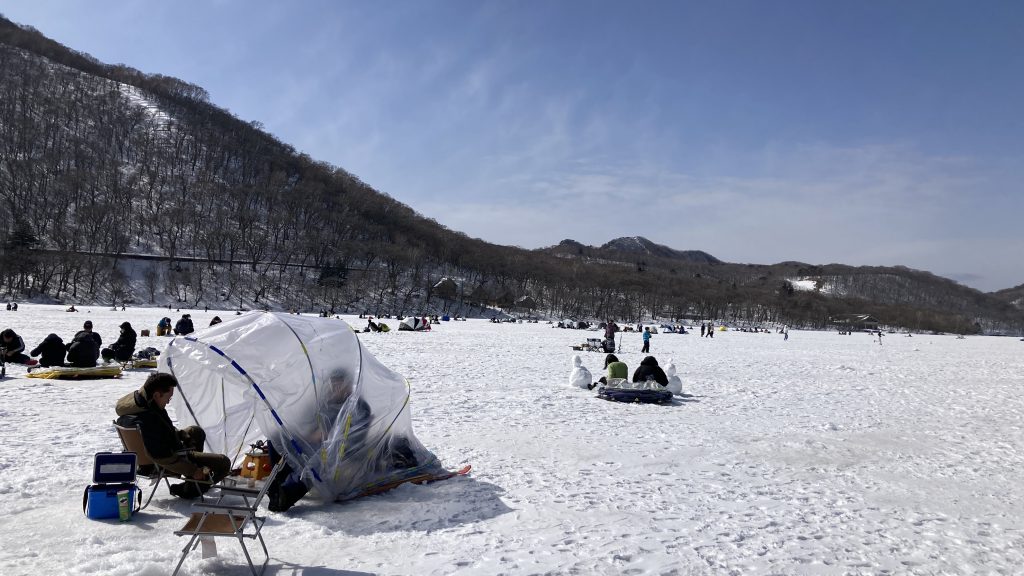
I started my solo adventure at Maebashi Station, where you can catch a bus to the top of the mountain. If you’re starting your trip from Tokyo, it is possible to take the 4 a.m. train in time to meet the bus from Maebashi, but it’s very tight. I’d suggest staying overnight in Maebashi the night before. Or for an even more memorable experience, you can stay in a traditional inn on top of the mountain.
For my trip, I took the 7:32 bus from Maebashi Station. Make sure to get on the bus bound for Fujimi Onsen or Akagi Visitor Center. It leaves from bus platform #6 at the station’s north exit. See here for more details about bus access.
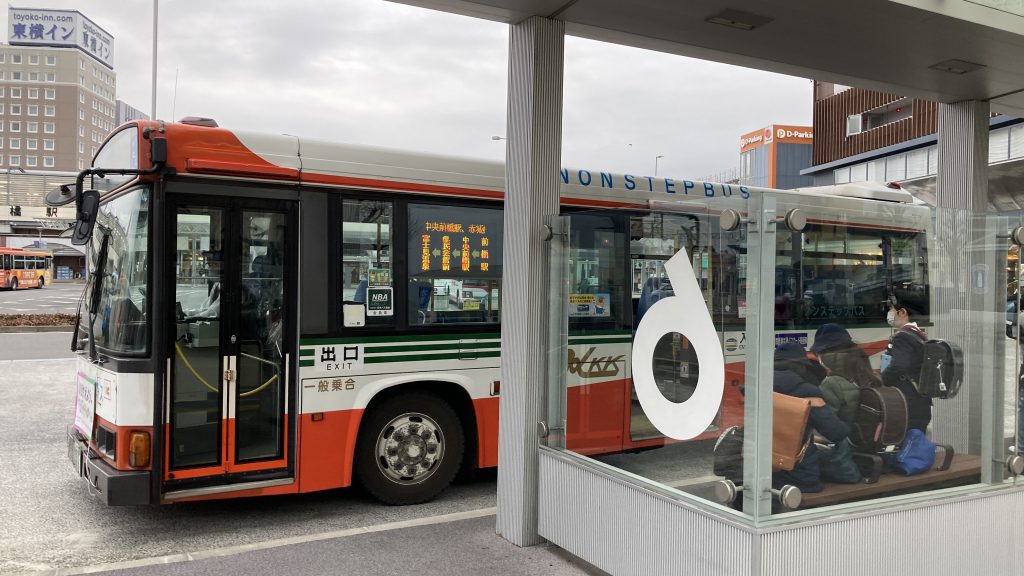
It was a weekday, and a whole hoard of elementary students got on with me. It was cute to see all of them on their way to school. They got off at the very first stop, so the remaining passengers and I had some breathing room. I sat next to an obvious hiker with poles strapped to his backpack. We had a nice chat, and he told me he was on his way to his first ever hike up a snowy peak–he was in for quite an adventure!
Since there are no direct buses to the top on weekdays, I had to switch at Fujimi Onsen. It’s the last stop on the bus from Maebashi, so you can’t miss it. The bus to the summit was waiting right behind when I got off, so it was a very easy transfer.
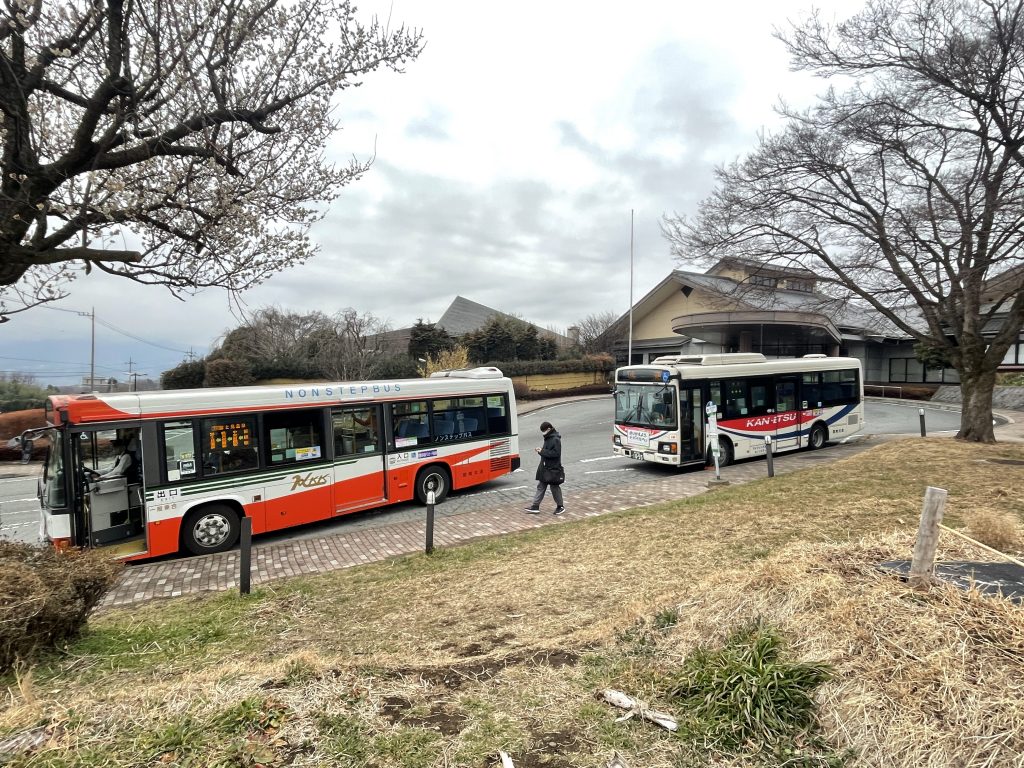
From there it was about 45 minutes winding up the mountain. The scenery gradually got snowy as the bus climbed. The hiker and I were the only riders on the bus at this point, so I could sit and look out from literally wherever I wanted. I got off at Akagi Hiroba Mae, just across the street from the shops and restaurants with rental equipment.
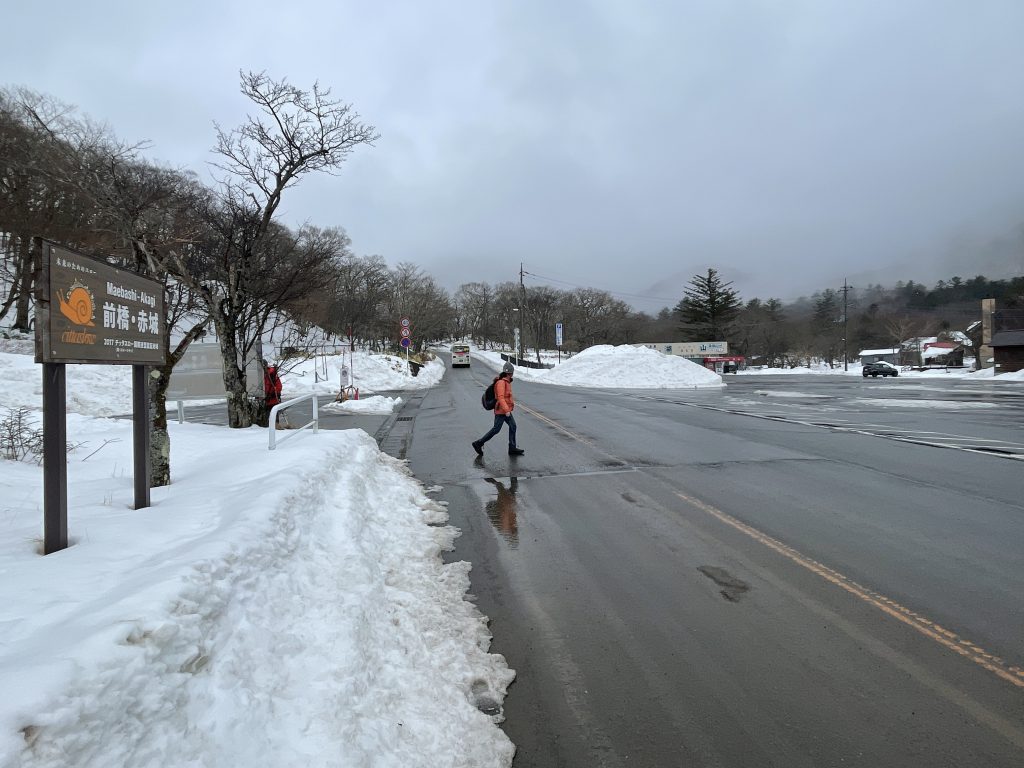
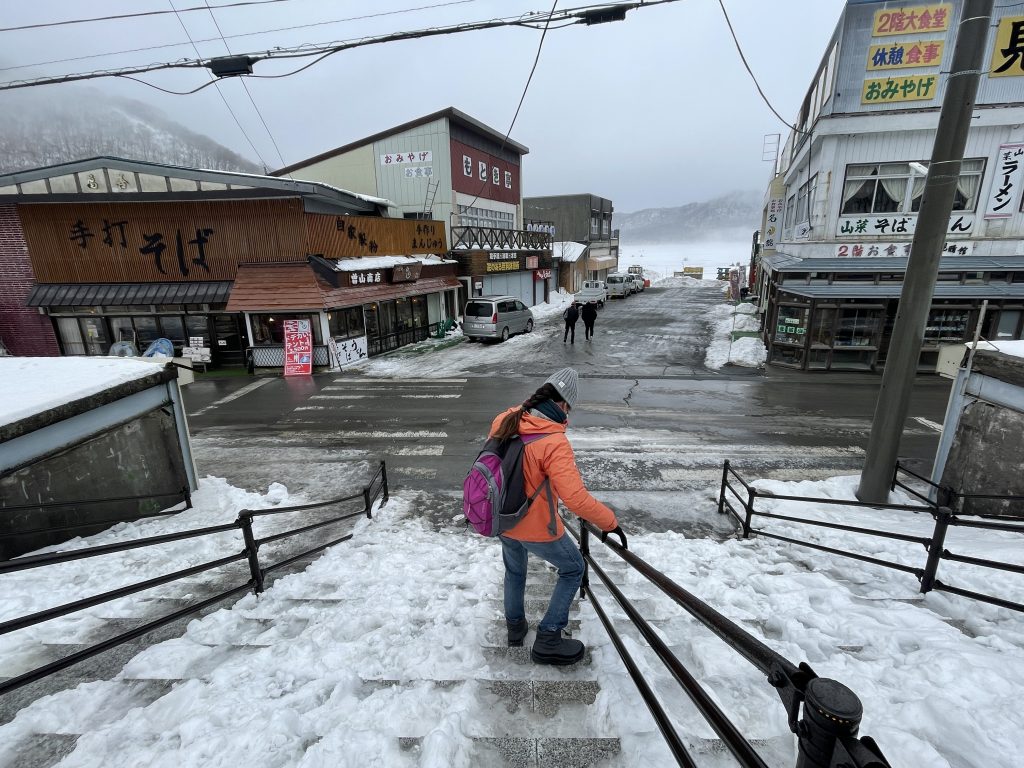
I rented my equipment from a shop called Meigetsukan. They had 1-person and 2-person tents available, plus fishing rods and all the necessary equipment. It costs about 4,500 yen, including the fishing ticket you need to buy to enter the fishing area.
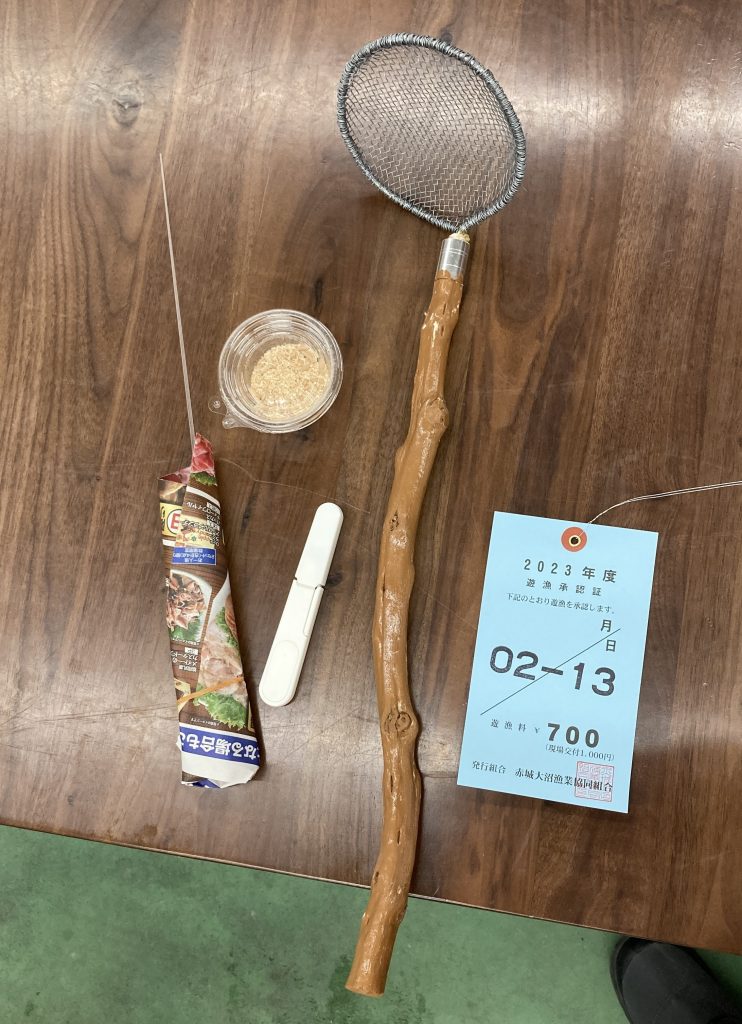
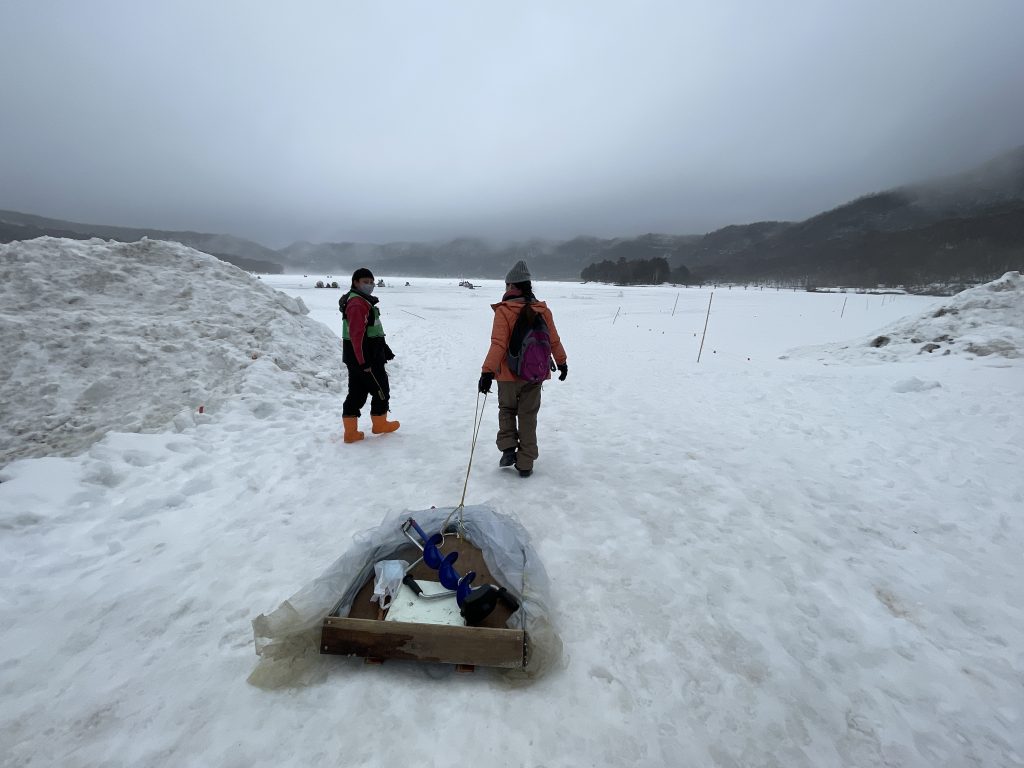
The younger guy working there spoke great English–apparently he had gone on a working holiday in Australia. He walked me onto the ice and through the whole process. We started by drilling a hole.
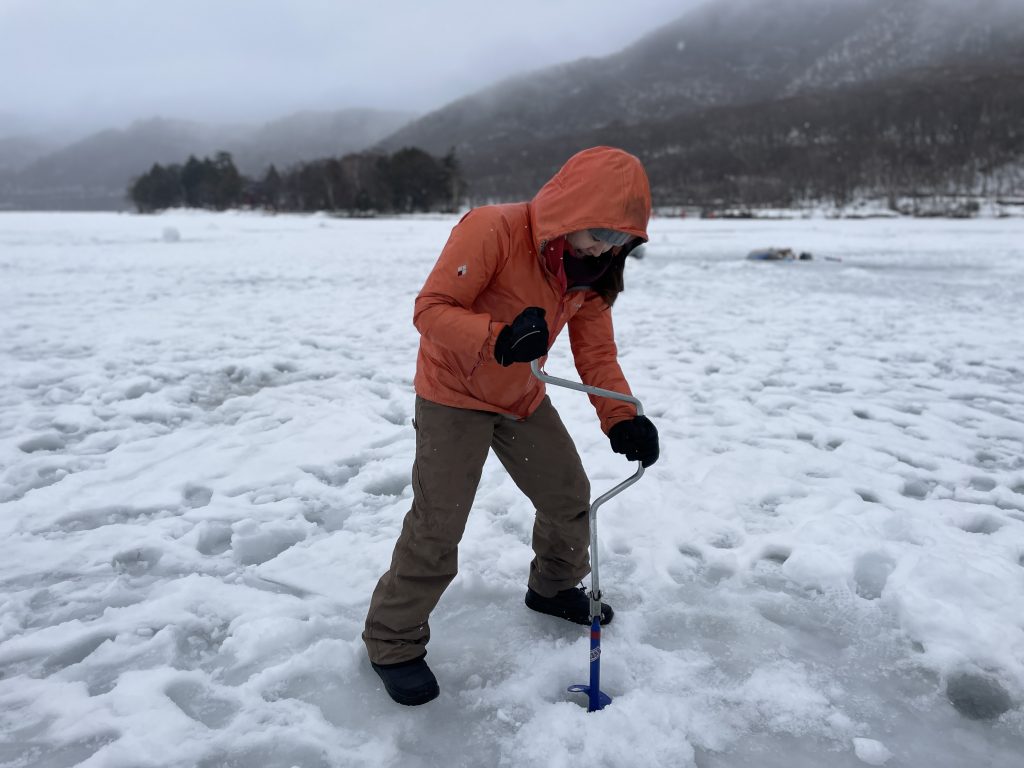
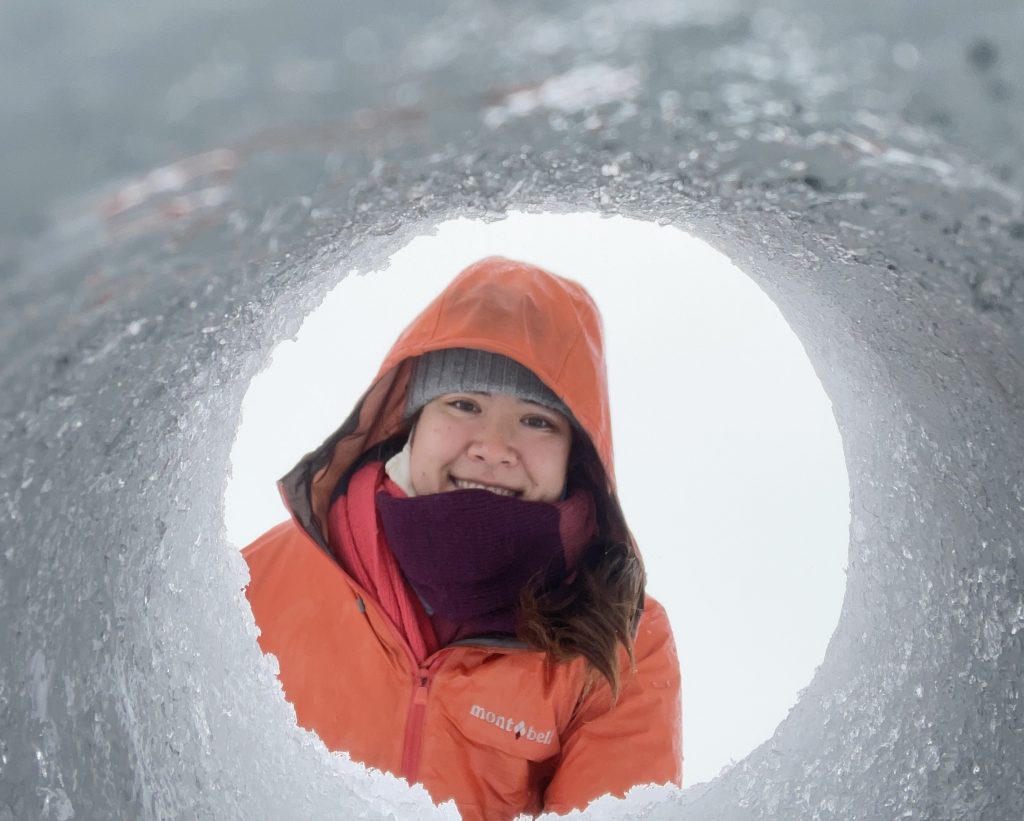
Then we put bait on the hooks and lowered the long line into the water.
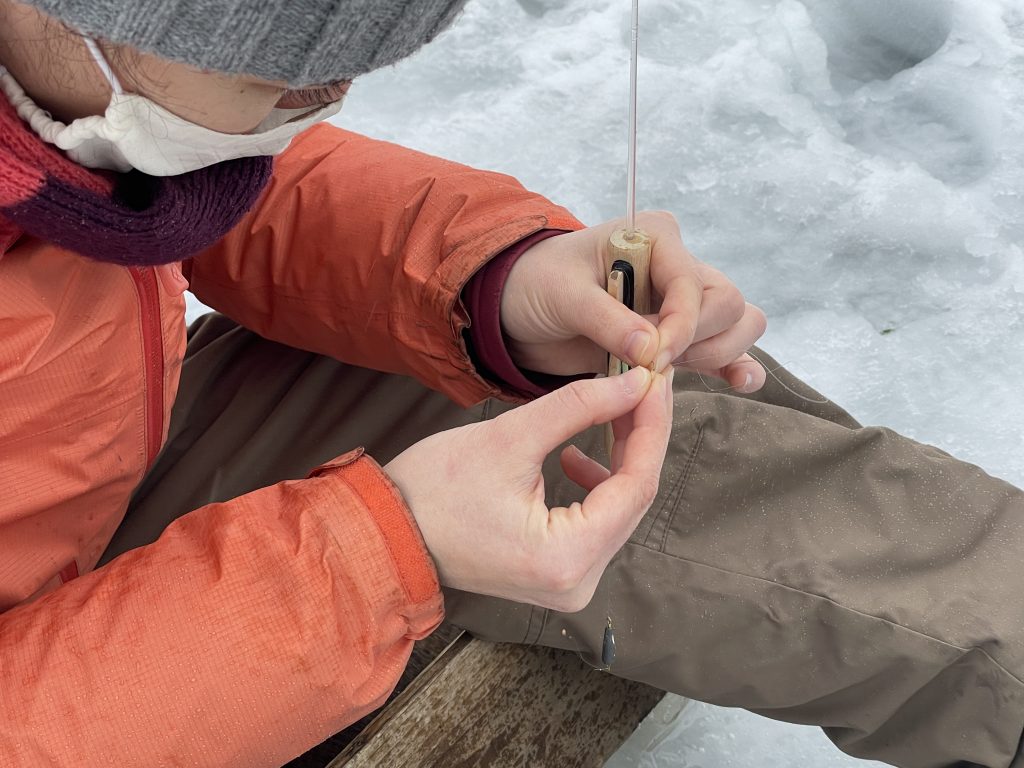
He showed me how to bounce the rod up and down to trick the fish into thinking our bait was normal food. He even used his radar to check for fish in the water. He was so friendly and eager to help. I felt right at home.
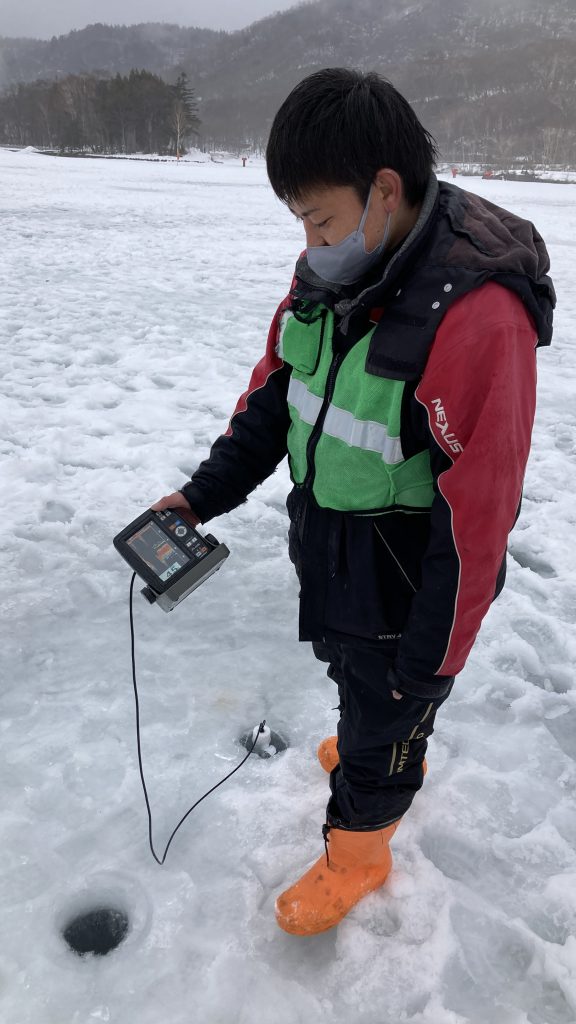
With everything all set up, I sat down in the convertible snail shell tent and started to bob my line. One, two, three, stop. That’s the pattern Mr. Meigetsukan had taught me, and I focused on getting the height and pace just right. One, two, three, stop. I’m not usually one for fishing, but with my cute little rod and my view of the icy lake, I relaxed into a sort of moving meditation. It was a great way to escape from the bustle of life and just exist for a morning.
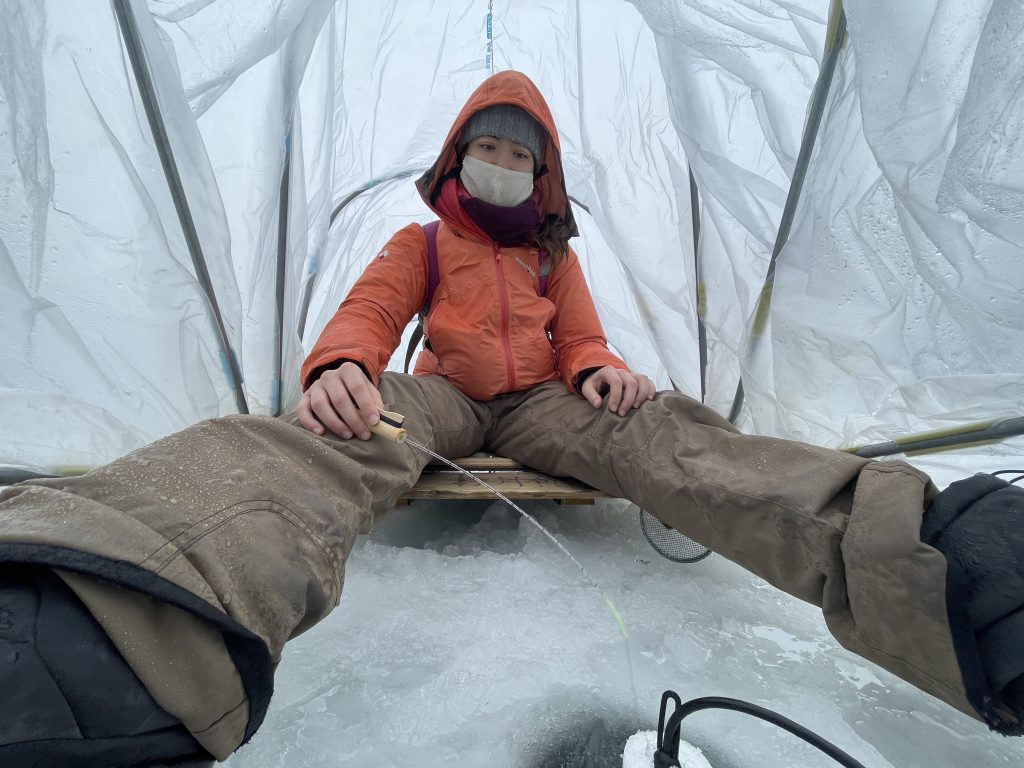
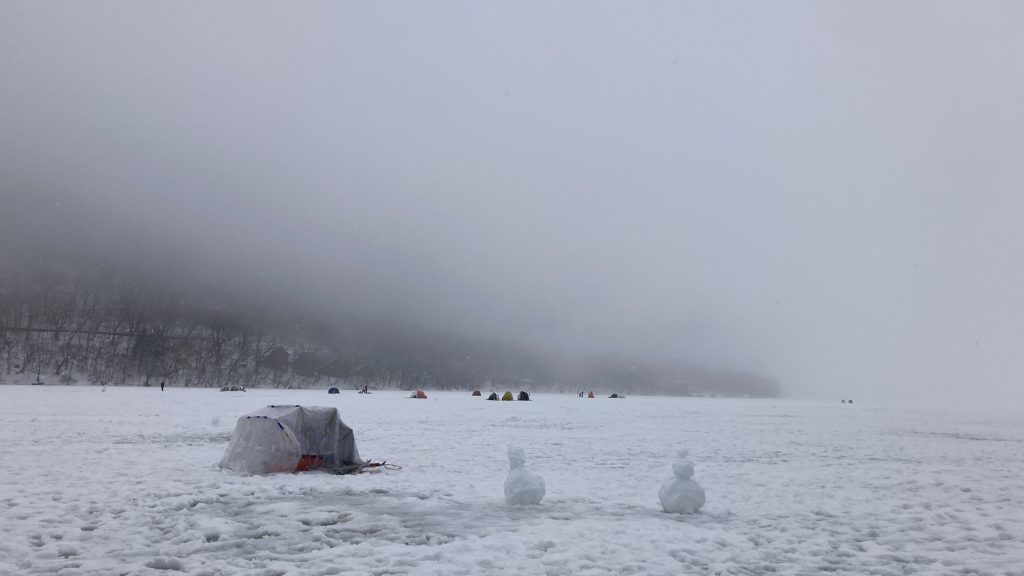
Eventually though, enough time passed that I realized nothing was biting.
It was mid-February. Apparently many of the fish are pregnant during this time of the winter, and that makes them hard to catch. Even the veteran fishermen around me weren’t having much luck. For anyone planning a trip in advance, I’d recommend avoiding this part of the season. Aim for mid-January to early February, or late February to the end of March.
And then, despite the snowy landscape around me, it started to rain. Ugh. I was extra glad for my waterproof and windproof fishing tent then. But all hope was not lost. My friend from Meigetsukan asked some of the local regulars if they had any fish to spare for a traveler down on her luck, and they did!
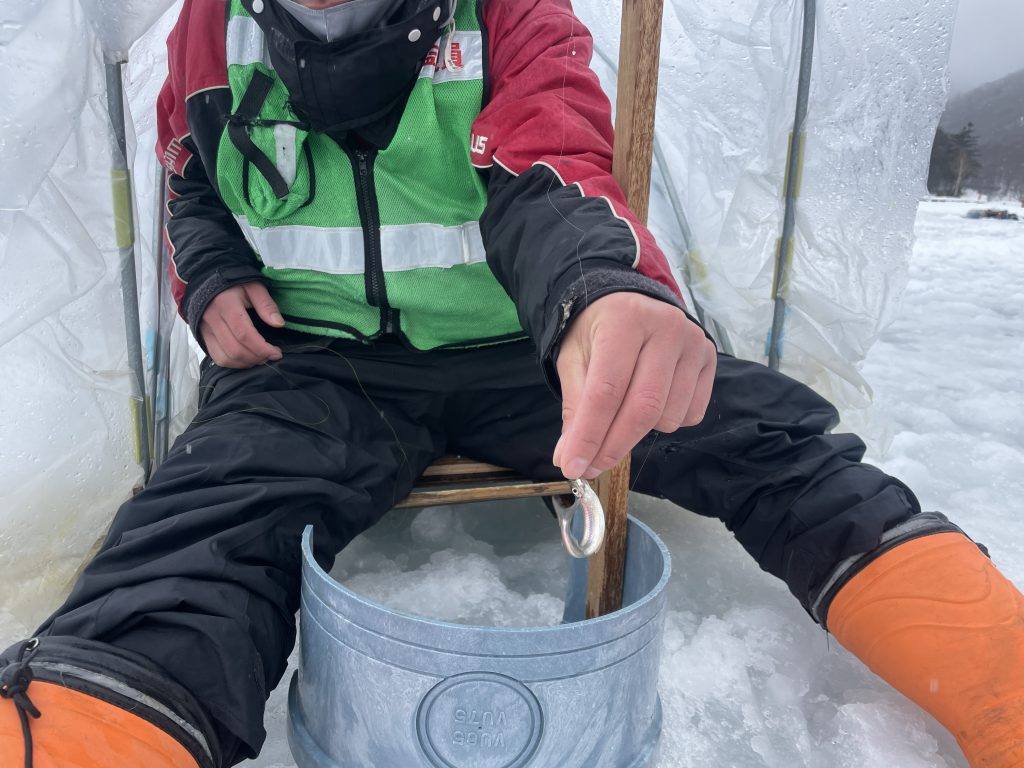
I ended up with over 10 little fish to take back to the shop with me. They fried them for free, and I filled my cold stomach with tasty fish. The shopkeepers also gave me hot shiitake mushroom broth to drink as tea, and some mini sweet buns on the house–a true feast, and I hadn’t even ordered lunch yet.
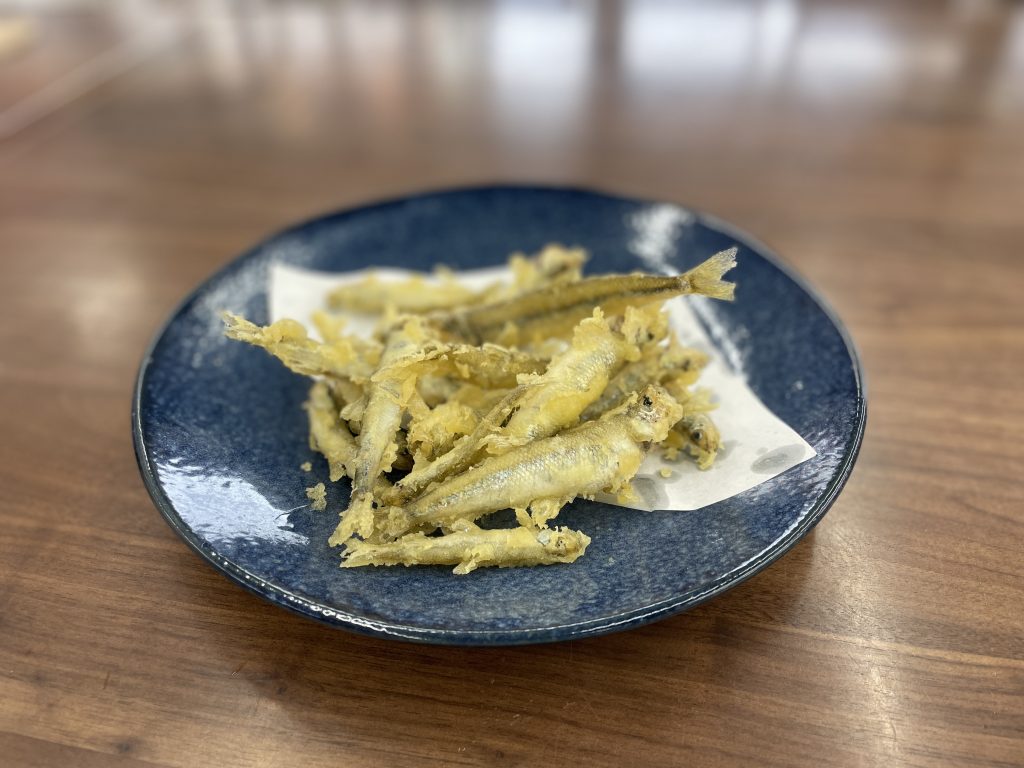
For my main course, I chose an extra special version of a Gunma specialty: okkirikomi is a type of thick hand-cut udon noodle, usually simmered in miso broth. But instead of the soup version of this dish, Meigetsukan had a cheesy miso sauce okkirikomi noodle casserole. It was rich and warm and satisfying. For anyone looking for more familiar or lighter fare, they also serve curry, okkirikomi noodle soup, and set meals with rice and pickled vegetable salads to go with fried wakasagi smelt.

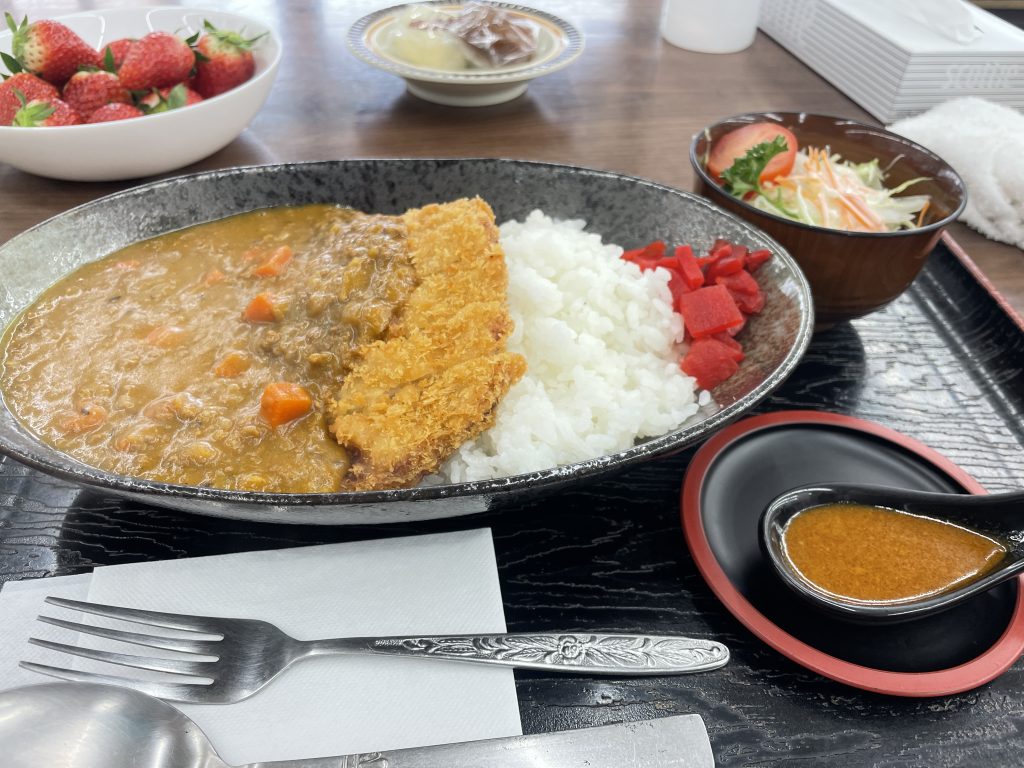
After shaking myself out of my food coma, I headed to my last stop on the mountain: Akagi Shrine. You can walk along the road or on the snow-covered sidewalk most of the way there, and it only takes about 10 minutes. The rain had turned into snow, and now the mountain top felt like a real winter wonderland.
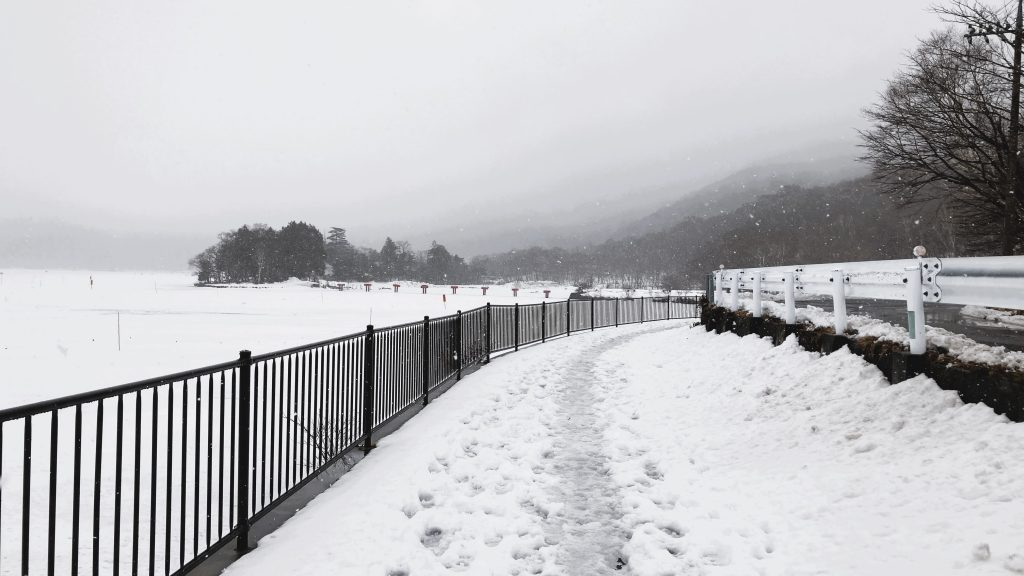
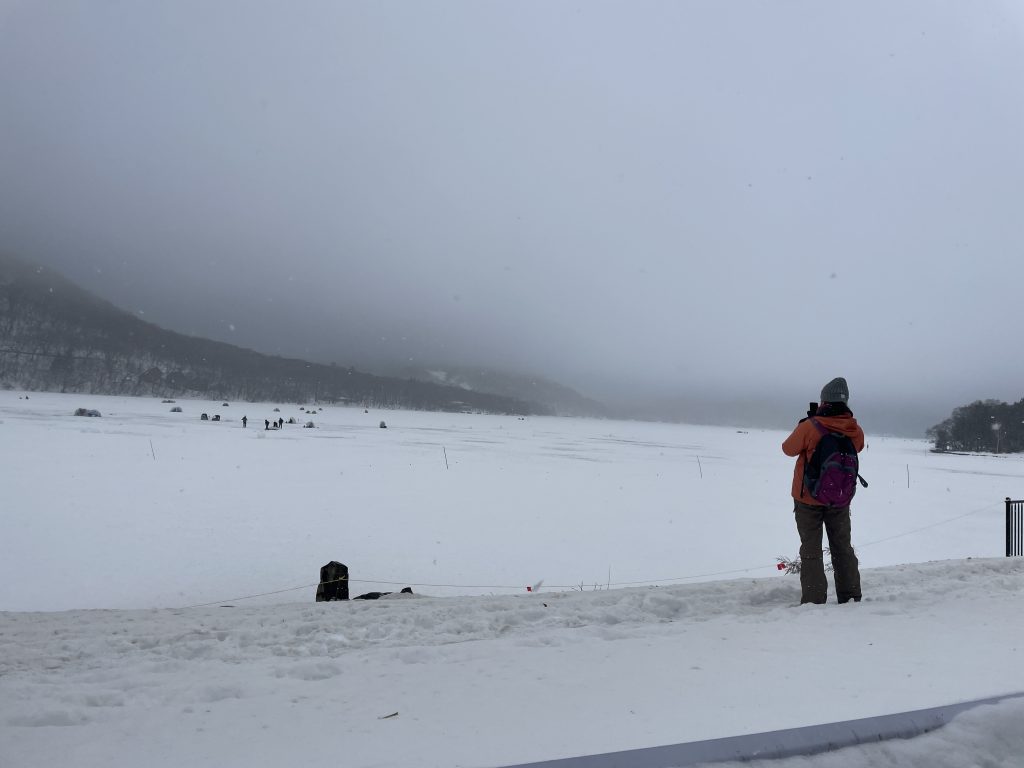
Akagi Shrine is a sanctuary for the spirit of the mountain. Its vivid red walls stood out against the snow falling around it. But you don’t need me to tell you it was beautiful–a couple in formal attire had come all the way up the mountain to have a photoshoot in front of it. If that’s not proof that the trek is worth it, I don’t know what is.
They didn’t hog the spot for too long, so I got to snap some of my own photos too.
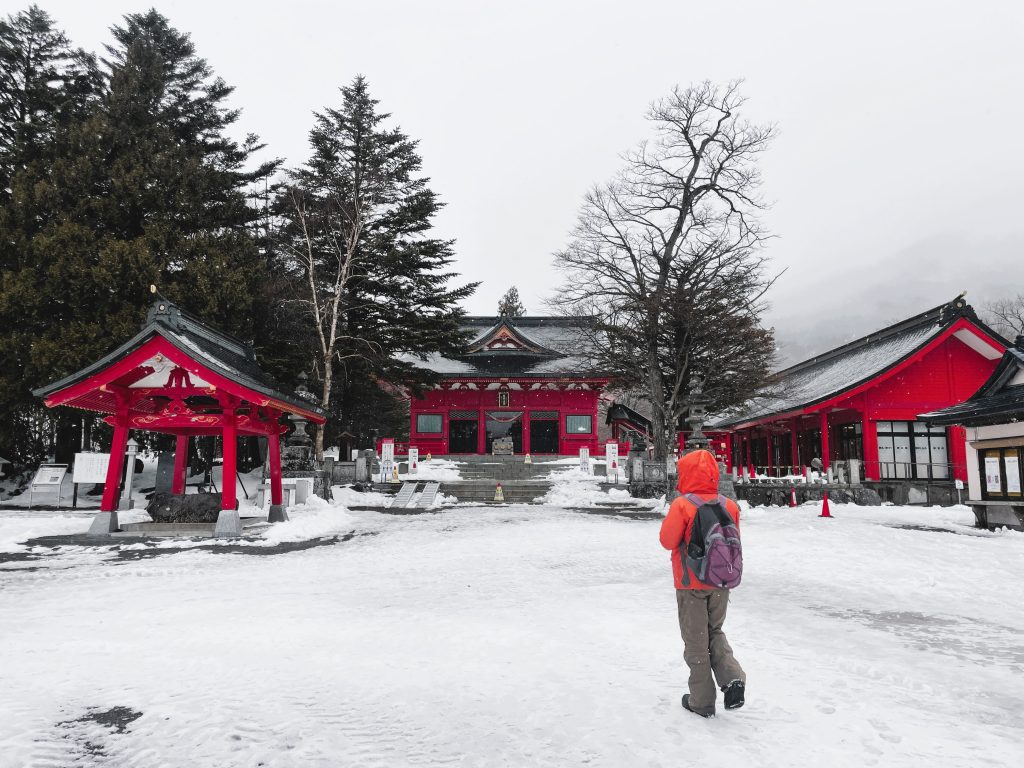
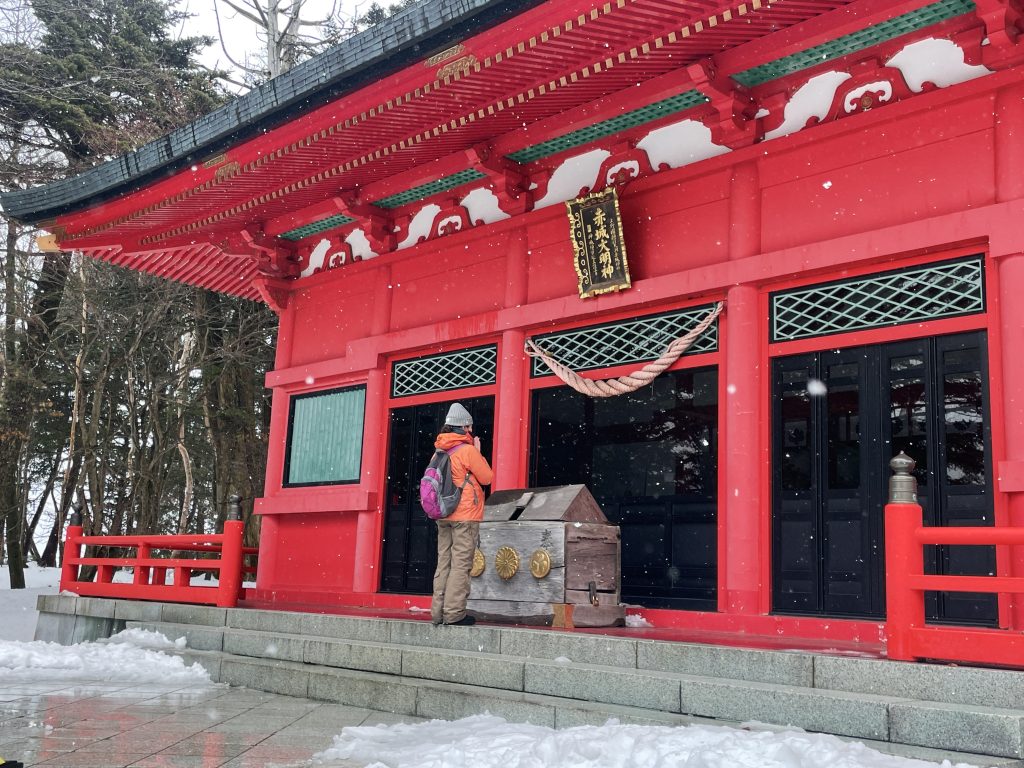
In addition to making wishes at the shrine, visitors can buy a charm at the shop, or just stare out at the lake from this new angle. I drew an omikuji fortune for myself to see what the future might hold for me. It came with a tiny daruma-shaped good luck charm. The perfect size for a souvenir to take back on the bus.
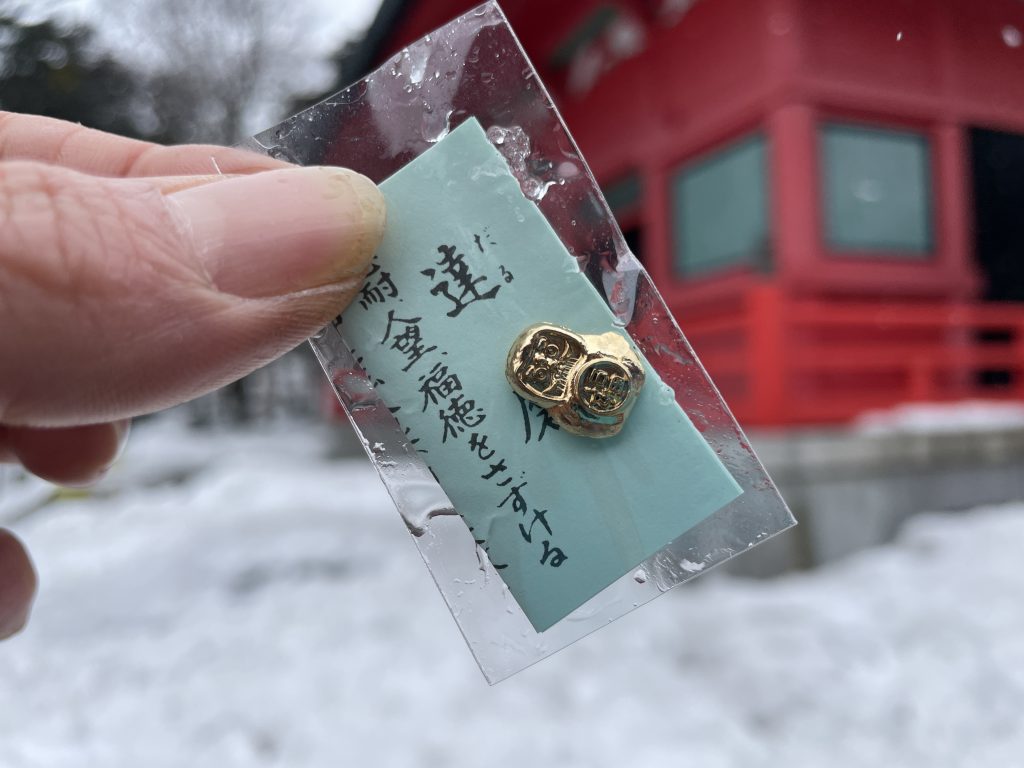
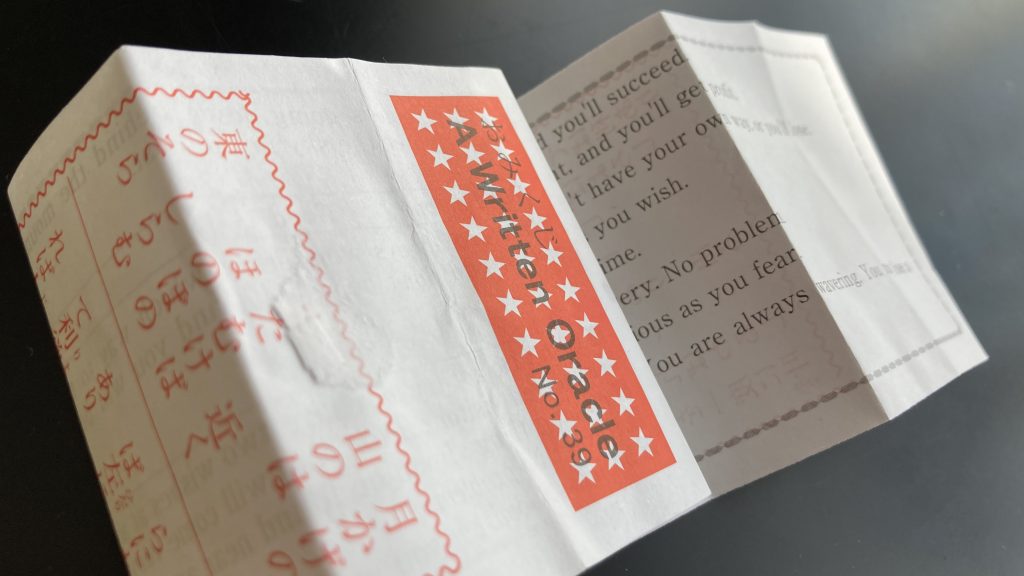
I walked back to the restaurants and Akagi Hiroba Mae bus stop to catch the 3:17 p.m. bus. There’s also one at 5:19 p.m. for anyone who wants to take more time on the mountain. Take note though, it might start getting dark and cold by then.
Overall I had a fun day, regardless of the slight fishing troubles. I live in a place where it doesn’t snow much, so it was refreshing to visit the wintery summit area. I love traveling to rural areas because you get to see the locals just going about their normal lives. The small community on top of Akagi is friendly, and the trip is sure to warm your heart even if your toes get a bit cold.
If you’re intrigued, check out the practical info page for ice fishing on Akagi.